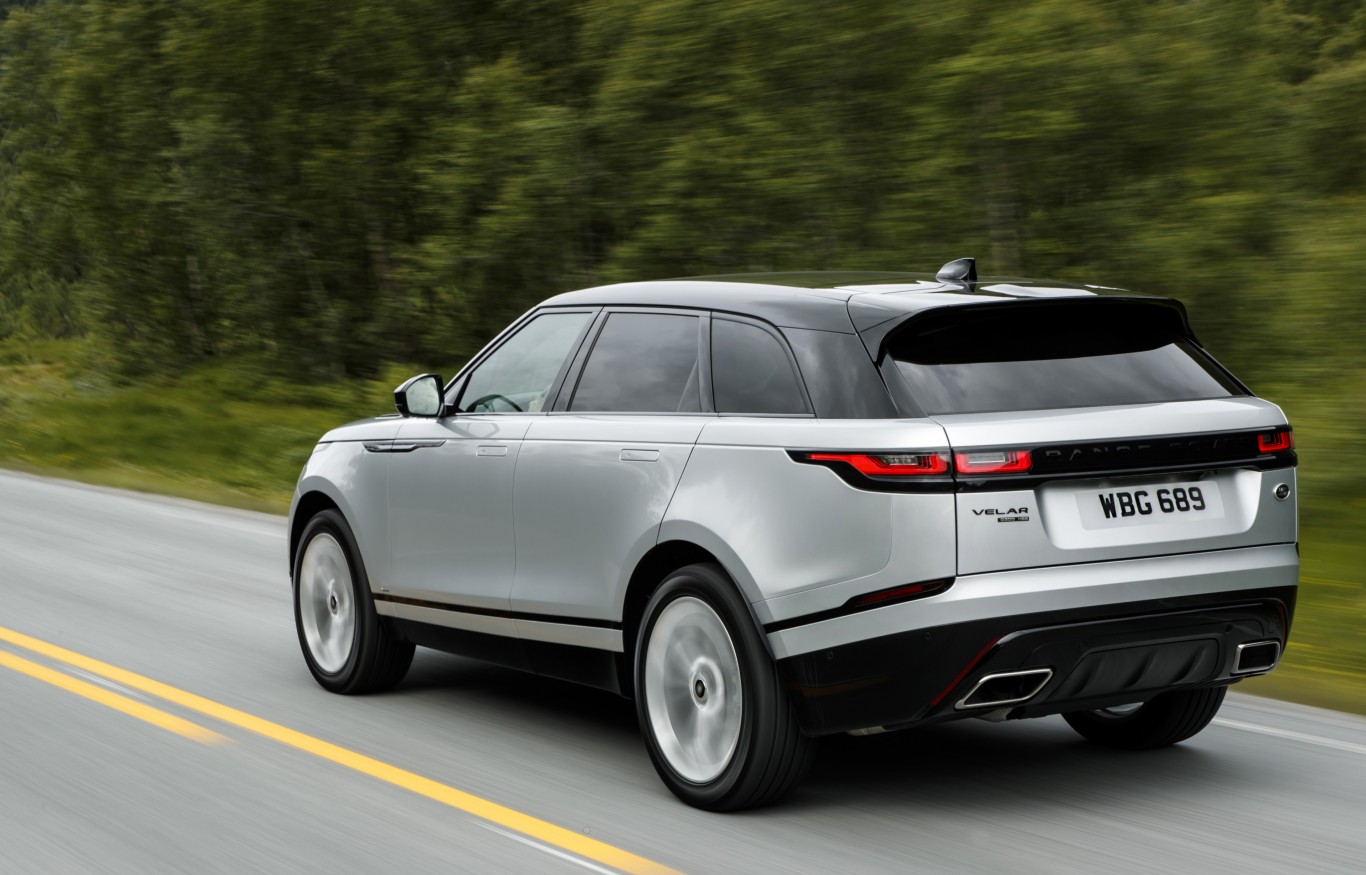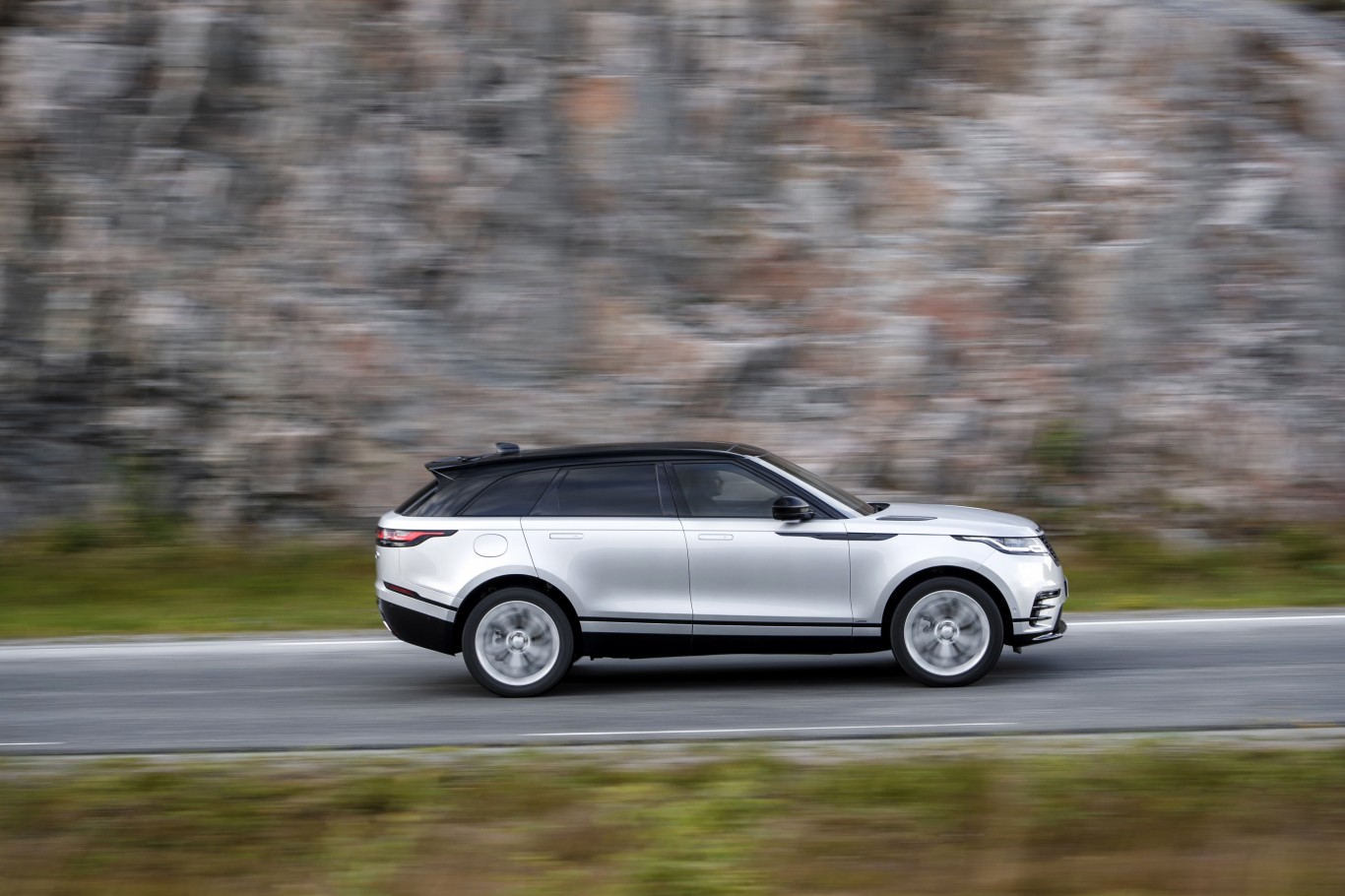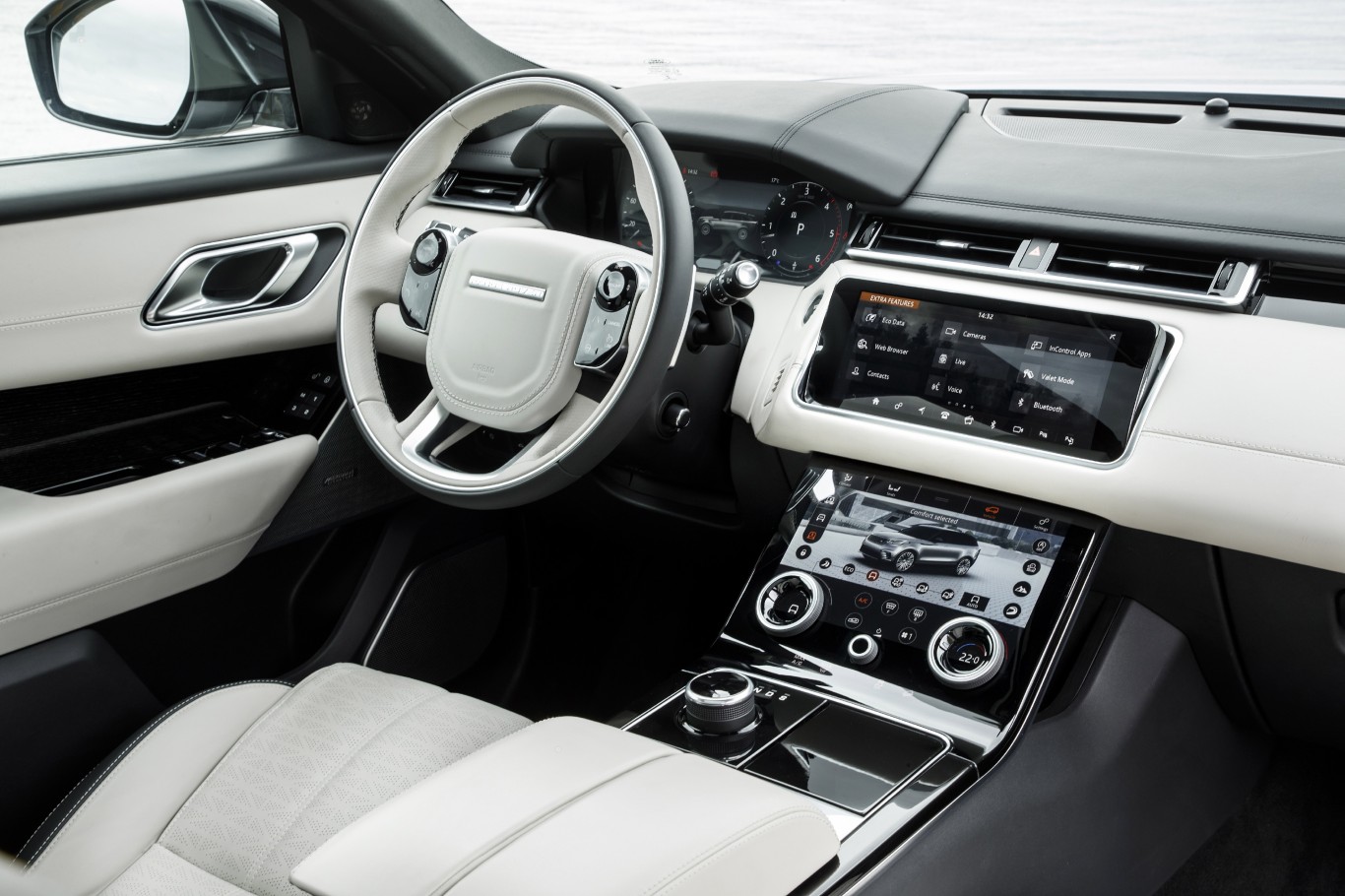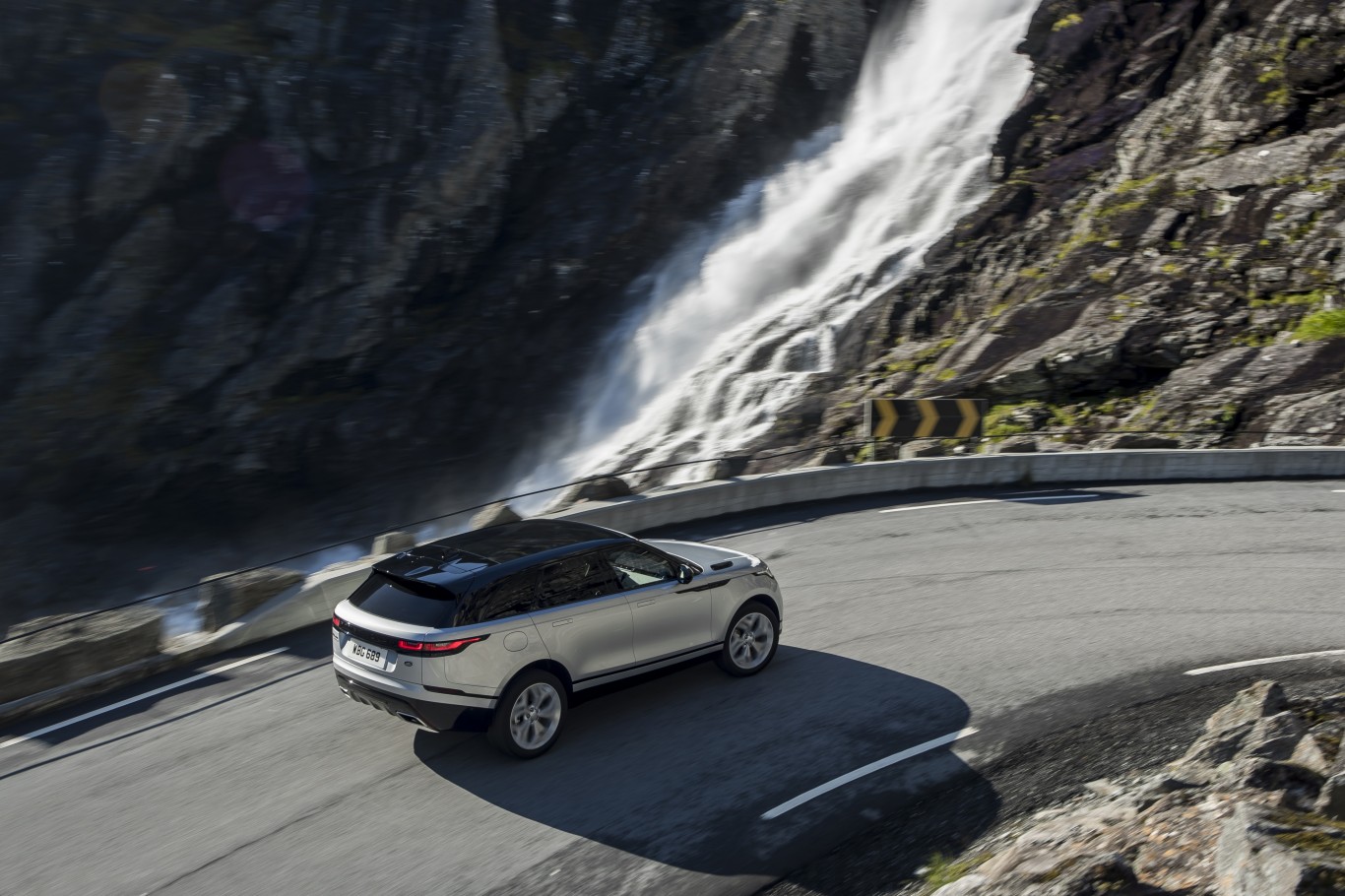Range Rover's Velar sets a new standard for luxury SUVs
Jack Evans heads to Norway to test Range Rover’s latest SUV – the Velar

What’s new?
Those looking to purchase a Range Rover used to have three main options. There was the Evoque, representing the more affordable end of the spectrum, the Sport, which sat in the middle and the standard Range Rover at the very top. Now, there’s one more car in the family – the Velar. Designed to sit in between the Evoque and Sport, it’s a mid-sized SUV for those who want a little more space and a little more luxury.
Featuring an all-new Touch Pro Duo infotainment system which comprises of two high-definition 10.2-inch touchscreens and fitted with Range Rover’s latest tech, it’s the most cutting-edge car that the brand has ever put to market. There are rivals – the Porsche Macan being the primary one – and with a segment almost brimmed full of SUVs, the Velar does have a tough fight on its hands if it wants to succeed.

Looks and image
The front end of the new Velar is unmistakable as that of a Range Rover, but with a twist. It features full Matrix LED headlights that are almost razor thin, sitting either side of a large, prominent grille. A side look at the profile of the Velar reveals it to be rather raked, though it still incorporates a ‘floating roof’ design as seen on other cars in the range.
The extremely short overhang at the front is contrasted by quite a large one at the rear which, in our eyes, can make it appear a touch dumpy. That said, the door handles which electronically retract to become flush with the car’s bodywork are an extremely neat touch, and it all works together to create a car that looks more like a concept rather than a vehicle that you can actually go out and buy.
Inside, the cabin is dominated by Range Rover’s new Touch Pro Duo infotainment system. The dual 10.2-inch touchscreens give easy access to navigation, media and phone functions via the top monitor, or climate control settings and driving mode selections through the lower one. It’s a system which is just as good to use as to look at, and represents a huge step forward for the brand over its existing offerings.
Space and practicality
To achieve in the SUV segment, any car needs to be practical. The Velar is somewhat of a mixed bag in this respect. The boot space, for example, is impressive. There’s 632 litres of boot space to be found with the rear seats raised, rising to 1,731 litres with them folded flat. It’s a huge load area, and because it’s square in size it is very useable. The Velar is quite a high car, which does mean that lugging heavier items into the boot could be more of a challenge, but there’s not much of load lip which makes things a little easier.
In contrast, the rear seat legroom seems somewhat mean. With two average-sized adults sat up front, there really wasn’t much space in the rear – though head and shoulder room levels were just right. In truth, we could have seen a little more taken off the boot capacity for the sake of a little more legroom, as there just doesn’t seem to be quite enough of the latter for a car of this size. That said, the cabin’s airy nature means that it does feel spacious overall, while soft-touch materials and well-padded seats make it a comfortable place to be.

Behind the wheel
The Velar, as mentioned earlier, is designed to sit in between the Evoque and Sport in the product line-up, and as such you’d expect it to drive perhaps not quite as keenly as the car above it, but offer more involvement than the one below it. However, the first thing that strikes you when you get behind the wheel – and before you’ve even started the engine – is just how vast the Velar feels. It’s near impossible to see the very front of the car, and this can be a little disconcerting to begin with. It could be down to the cabin’s low positioning inside the car as a whole, combined with the vehicle’s sheer size – though we’d need a little more time in it on UK roads to find out.

After selecting ‘D’ on the car’s rotary gear controller, the Velar – fitted with the turbocharged V6 diesel in our test car – pulls away cleanly and responds with more than enough urgency for a car of this size. The eight-speed dual-clutch gearbox shifts without any fuss, and you can take manual control of switching cogs via the steering wheel-mounted paddles should you want to – though most drivers are likely to forget these in daily driving and leave the gearbox in all-auto mode. The impressive 700Nm of torque on tap makes for swift and easy overtaking, and means that the Velar never feels out of puff, even on extremely steep gradients found such as the ones found along our Norwegian test route.
The steering feels somewhat distant to begin with due to its relative lightness, but you soon become used to it. There’s not a huge amount of feel, but it’s not a hard car to place to on the road. The only drawback is, again, the car’s size and this can make it feel somewhat cumbersome on single country lanes.
Our car was a HSE model and came fitted with the turbocharged V6 diesel, air suspension, and rode on 21-inch alloy wheels. We also tested a First Edition-specification car – limited to the first year of production – and the ride was noticeably firmer on this model’s larger 22-inch alloys – we’d recommend choosing the smaller wheel as it does wonders for the overall ride quality.
The Velar is also nothing short of exceptional when it comes to tackling tricky conditions. It’s fitted with the latest Terrain Response system, and it allowed the car to scrabble up incredibly steep gradients, as well as handle all manner of slippery surfaces. If left in full Auto terrain mode, it’ll happily tackle almost anything – even when on standard road tyres. If you’re looking for a car for all conditions, then the Velar is the car to go for – and it more than lives up to Range Rover’s ‘go anywhere’ ethos.
Value for money
Prices for the Velar start at £44,830. For that, you get a base-spec vehicle fitted with the four-cylinder Ingenium diesel engine. As standard, all cars get Terrain Response, 18-inch alloy wheels and heated front seats – though they’re only manually adjustable. Cruise control, autonomous braking and keyless entry is also included, as is the Touch Pro Duo infotainment system. This base trim is available with the four-cylinder only.
Mid-range SE cars benefit from larger 20-inch alloy wheels, a 360-degree parking camera and a full 12.3-inch screen replacing the car’s traditional dials. You also get leather seats, of which the front two are powered and heated. However, these cars cost from £56,060 – though are now available with the turbocharged V6 diesel.
Prices for the Velar can go as high as £85,450 for top-spec First Edition cars, though it’s unlikely many drivers will choose this. The middle range cars offer excellent value for money as they come fitted with a good amount of standard equipment, and enough luxuries to keep even the most avid button-pusher happy.

Who would buy one?
The Velar will be perfect for those who want elegant looks and the latest tech wrapped up in a true go-anywhere package. It’s likely many drivers will be tempted to Range Rover from other brands – and we couldn’t blame them. Relatively limited rear legroom aside, the Velar is very well-rounded car, and it’s likely to be immensely popular – and deservedly so.
THE KNOWLEDGE
Model: Range Rover Velar
Base price: £48,830
Engine tested: 3.0-litre turbocharged diesel
Power: 300bhp
Torque: 700Nm
Max speed: 150mph
0-60mph: 6.1
MPG: 44.1
Emissions: 167g/km





